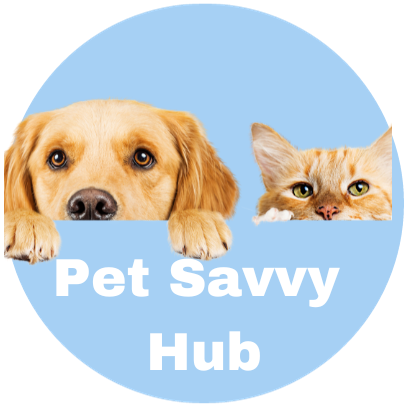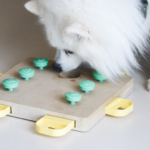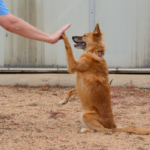Understanding Dog Tail Language
So, you think you know your furry friend inside out, hm? Well, think again! When it comes to understanding your precious pup, there’s more to it than just wagging its tail. Dog tail language is a complex and mysterious world that you’re about to enter. From the enthusiastic helicopter wiggle to the little wag with a slight curl, this guide will unravel the secrets behind your canine companion’s tail behavior. Buckle up, folks, because you’re about to embark on a tail-tastic adventure!

Understanding Dog Tail Language
Dogs are amazing creatures with the ability to communicate in various ways, including using their tails. Yes, those little (or not-so-little) wagging appendages are more than just a cute accessory. Understanding dog tail language is crucial for any dog owner or enthusiast, as it can reveal vital information about a dog’s emotions, intentions, and overall well-being. So, let’s dive into the fascinating world of dog tail language and unravel the secrets hidden in those wagging tails!
The Importance of Dog Tail Language
You might be wondering, “Why is it so important to understand dog tail language?” Well, my friend, the tail is like a dog’s emotional barometer. It’s their way of expressing themselves when words fail them. By interpreting their tail language correctly, you can gauge their mood, determine if they’re comfortable or anxious, and even predict how they might react in certain situations. In other words, it’s like having access to a doggy instruction manual encoded in tail movements.

Common Dog Tail Positions
Before we delve deeper into the complexities, let’s start with some basic dog tail positions. Picture this: your dog’s tail standing tall and straight up in the air, resembling a proud flagpole. This is a sign of utter confidence and dominance. It’s like your pooch saying, “I’m the boss around here!”
Conversely, a tucked tail, where it’s curled beneath your dog’s body, signifies fear, anxiety, or submission. It’s their way of saying, “Please, don’t hurt me!” This is especially common in dogs who have had negative experiences or lack socialization.
But there’s more to tail positions than just upright or tucked!
Setting regular times for walks and play sessions is equally important. Dogs appreciate consistency and knowing what to expect.
Whether it’s a morning walk before breakfast or an evening play session after dinner, try to maintain a regular schedule.
This helps ensure your dog gets the exercise they need and allows you to create a bond through shared activities.
Dogs leave paw prints on our hearts.
Unknown
Signs of a Happy Dog
Ah, the sight of a happily wagging tail is a mood-lifter for anyone. When a dog’s tail is wagging in a relaxed, rhythmic motion from side to side, it’s a surefire sign of a happy camper. Think of it as your furry friend excitedly saying, “Life is good, my human!”
What’s even more adorable is when they accompany their wagging tail with a whole-body wiggle. It’s like they’re doing a joyful waggy dance, expressing their sheer delight. So, if you spot this tail wag-dance combo, congratulations! You’ve got one blissful doggo on your hands.
Feeding your dog a balanced and nutritious diet is essential. Look for high-quality commercial dog foods that have the necessary nutrients and avoid those with artificial additives or fillers. You can also consider homemade meals or a combination of commercial and homemade food, but ensure they meet your dog’s nutritional requirements.

Signs of a Nervous or Stressed Dog
While we all wish our dogs could live in a permanent state of happiness, they, too, experience moments of nervousness and stress. Luckily, their tails can serve as a telltale sign, helping us understand their emotional state and potentially prevent any unwanted escalations.
When a dog is feeling unsure or uneasy, their tail might be held low, almost parallel to the ground. It’s like they’re saying, “I’m not so sure about this, human.” This position often accompanies other anxious behaviors such as trembling or cowering.
Another sign of stress is when a dog’s tail is held stiffly in an upright position, but the wagging is minimal. It’s as if their tail is trying to fake enthusiasm while their body language tells a different story. Keep an eye out for this subtle cue, as it may indicate that your dog needs some extra love and reassurance.
Early puppyhood lays the foundation for paw preferences. Explore tips to foster balanced development during these critical developmental stages.
Savvy TIP !
Consider placing the bed in a quiet, draft-free location away from excessive noise.
Savvy TIP !
Avoid leaving your dog outside for extended periods in extreme weather conditions.
Providing appropriate shelter is crucial, especially if your dog spends a significant amount of time outside:
Signs of Agression
Now, let’s talk about the less pleasant side of dog tail language: aggression. When a dog feels threatened or is on the brink of losing their cool, their tail can reveal important clues that should not be ignored.
An aggressive dog will have a stiff, erect tail pointed straight up, accompanied by tense body posture. The tail might even wag rapidly and rigidly, almost like an angry metronome. This combination is a clear indication that your furry friend is on high alert and ready for possible confrontation.
On the other hand, a dog displaying offensive aggression may hold their tail high but with it fluffed up and bristling. Picture a puffed-up peacock trying to establish dominance – that’s what you should look for. This aggressive tail display is a warning sign to tread carefully and avoid provoking a potentially dangerous situation.
Dogs are wise. They crawl away into a quiet corner and lick their wounds and do not rejoin the world until they are whole once more.
Agatha Christie

The Role of Breed and Dog Type
While tail positions and movements are universal cues, it’s important to consider that different dog breeds have varying tail types, which can slightly alter their communication style. Some breeds, like the Siberian Husky or the Alaskan Malamute, have tightly curled tails that almost touch their backs. Other breeds, such as the Greyhound or the Whippet, have long, slender tails that gracefully arch downward.
It’s essential to take these breed-specific tail types into account when interpreting your dog’s tail language. A Husky’s tightly curled tail might naturally rest in a tucked position but doesn’t necessarily indicate fear or anxiety. Similarly, a Greyhound’s downward arch may not imply submissiveness but rather a relaxed state.
Interpreting Tail Movements
Now that we’ve covered tail positions, let’s move on to the ever-changing arena of tail movements. A wagging tail can communicate a multitude of emotions and intentions, depending on the speed, direction, and vigor behind it.
A broad, sweeping wag from side to side is usually a sign of a friendly, happy dog. It’s like your dog saying, “Hello, world! Let’s have some fun!” You can almost imagine the exclamation mark at the end of their wagging tail.
However, a slow, tentative wag might indicate uncertainty or hesitation. It’s as if your dog is cautiously exploring the situation and trying to decide how they feel about it. Think of it like a gentle reminder for you to proceed with care.
On the opposite end of the spectrum, a rapid, frenzied wag can signal excitement or even overstimulation. It’s like your dog is yelling, “I can’t contain my joy!” So, before you end up in a whirlwind of flying fur, make sure you understand the difference between excitement and hysteria!
Additional Body Language Cues to Consider
While the tail is undoubtedly a vital component of dog communication, it’s essential to remember that it’s not the sole indicator of their emotions. Dogs use a combination of body language cues to express themselves fully.
For example, if your dog’s tail is wagging happily, but their body is rigid and tense, it might be a sign of nervousness or alertness. Similarly, if they’re wagging their tail low and close to their body, with ears back and pupils dilated, they might be exhibiting fear or anxiety.
To become a true master of doggy body language, pay attention to their overall posture, facial expressions, ear position, and eye contact. When you put all these puzzle pieces together, you’ll have a clearer understanding of what your four-legged friend is trying to communicate.

Feeding your dog a balanced and nutritious diet is essential. Look for high-quality commercial dog foods that have the necessary nutrients and avoid those with artificial additives or fillers. You can also consider homemade meals or a combination of commercial and homemade food, but ensure they meet your dog’s nutritional requirements.
Misconceptions About Dog Tail Language
Now, let’s debunk some common misconceptions surrounding dog tail language.
First and foremost, the old belief that a wagging tail always means a friendly dog is, unfortunately, not entirely accurate. Remember, the speed, vigor, and accompanying body language are just as crucial as the wag itself. So, don’t let a fast wag deceive you into thinking that all is well in doggy paradise.
Secondly, it’s essential to consider individual differences and context when interpreting tail language. Just like humans, every dog has their unique personality and quirks. What might be a joyful wag for one dog could be a sign of discomfort for another. Additionally, the environment, previous experiences, and current circumstances can all influence a dog’s tail language. So, always read the whole situation rather than relying on tail language alone.
If you notice any changes in your dog's behavior, appetite, or general well-being, address any health concerns promptly. Dogs can't communicate their discomfort or pain verbally, so it's essential to be observant and attentive to any signs of illness. Regular veterinary care and open communication with your veterinarian will help ensure your dog's health needs are met.
Dogs do speak, but only to those who know how to listen.
Orhan Pamuk
Congratulations, my dear reader! You have now earned your well-deserved Ph.D. in Dog Tail Language. Armed with this newfound knowledge, you can navigate the intricate world of canine communication with confidence and finesse.
Remember, understanding dog tail language is like having the key to a secret vault of emotions and intentions. By observing your dog’s tail positions and movements, along with their broader body language cues, you’ll become a skilled interpreter of their thoughts and feelings.
So, go forth, my friend, and embrace the wagging wonder that is dog tail language. Your furry companion will be eternally grateful for your efforts to understand and connect with them on a deeper level. And who knows, maybe one day you’ll even teach them a thing or two about tail etiquette. Wag on!
In Conclusion
Canine Handedness, often overlooked, is a fascinating aspect that deserves attention. Recognizing and understanding your dog’s paw preference unveils unique insights into their individuality. Whether in behavior, training, or daily activities, a dog’s paw preference plays a significant role. Observe your four-legged companion, discover their favored paw, and unlock the richness of your connection—one paw at a time.









